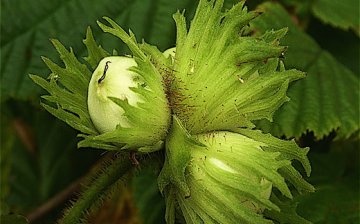Hazel tree, or hazel
The hazel tree is distinguished by rather high indicators of shade resistance, however, it is worth noting that excessively strong shading negatively affects its fruiting and provokes the loss of color by the leaves. This plant thrives best on rich fertile soils with good drainage and a neutral acid-base balance. The optimal place for planting hazel is all kinds of slopes (preferably their northern and eastern parts), on which the smallest fluctuations in daily temperatures are observed in the cold season, which, in turn, significantly reduces the risk of burns and freezing.
The hazel tree is also quite resistant to the effects of low temperatures: for example, during flowering, male flowers do not freeze, even when the thermometer drops to minus five degrees, and female flowers - to minus eight. As for the pollen and catkins, they are not damaged even in the most severe frosts down to thirty degrees below zero.
This plant can be propagated using seeds (in this case, stratification will be required), by grafting, dividing the bush, layering, and also by root suckers. Of all the above methods, reproduction by seeds is the least troublesome, but it also has its drawbacks. For example, plants propagated in this way, due to the splitting of the characteristics of the mother tree, do not retain varieties, and the time of fruiting is significantly delayed (among other things, the fruits may not have very high taste qualities).



